"We also demand our place in the sun!" With this sentence, which has become famous, the later Chancellor von Bülow described Germany's longing for colonial world importance in 1897.
In the beginning there was skepticism
"Pardon will not be given! Prisoners will not be taken!" With this battle cry, Kaiser Wilhelm II sent his soldiers on a cruel revenge campaign in July 1900 after the Chinese Boxer Rebellion. The quotes from the Chancellor and the Kaiser show two facets of German colonial policy:the hope for economic growth and world fame on the one hand, and the subjugation of the locals on the other.
While other great powers established colony after colony, Germany held back for a long time. In 1683, the Brandenburg Elector Friedrich Wilhelm created the fortress of Groß Friedrichsburg in today's Ghana in order to trade in rubber, gold and slaves from there. But that was to remain the only German colony for a long time.
By 1871 Germany was split into many individual states. The great powers of Spain, Portugal, England and France had long since divided the world between themselves. And if Otto von Bismarck had had his way, not much would have changed after the founding of the German Empire in 1871. The Chancellor did not want to jeopardize the fragile European balance of power with colonial muscle flexing.
Bismarck changes his mind
What changed his mind in 1884 is still controversial today. With his about-face he probably wanted to support the National Liberal Party, which was well disposed towards him, in the Reichstag elections at the time.
But there were also economic reasons. Entrepreneurs such as the Hamburg shipowner Adolph Woermann or the Bremen merchant Franz Lüderitz feared that their African plantations and trading bases could become easy prey for other colonial powers without state protection.
In addition, they argued, colonies would bring economic benefits to the German Reich - on the one hand as a possible sales market, on the other hand as a supplier of raw materials such as rubber or palm oil.
The colonial associations founded in the early 1880s emphasized a completely different aspect:the German population is already growing so rapidly that more and more people are leaving the country - a bitter loss for the German Reich that can only be avoided by make German colonies overseas palatable to emigrants as an alternative.
After the German flag had finally been hoisted at the first African bases in the course of 1884, Bismarck invited the leading European powers as well as the USA and the Ottoman Empire to the so-called "Congo Conference" in Berlin in November. In months of negotiations, the areas of the African continent were divided among themselves - regardless of the will of the local population.
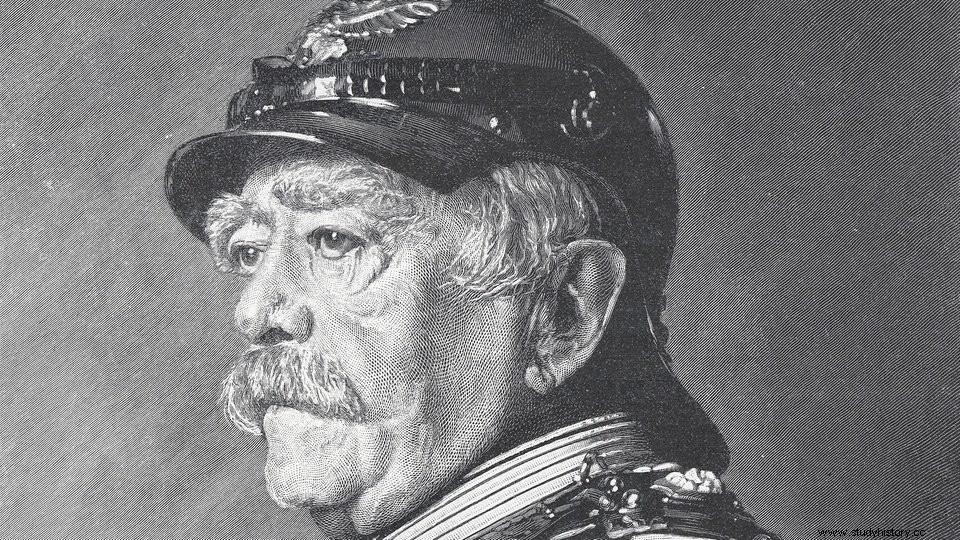
Bismarck was skeptical about German colonization for a long time
Contracts by show of hands
But how should one imagine the colonial land grabs in practice? For example, in what later became German South-West Africa, today's Namibia, the 21-year-old adventurer Heinrich Vogelsang bought a few square kilometers of land from a Nama chief – for 200 old guns and 100 English pounds.
He used a trick:Instead of an English mile (1.6 km), he calculated the German "geographical" measure:7.5 km. So the area was much larger than the locals had assumed. From this area, which later became Lüderitz Bay, Adolf Lüderitz's office wanted to do business and open up the hinterland.
In German East Africa, in today's Tanzania, Burundi and Rwanda, economic interests played less of a role than colonial superpower fantasies:there the colonialist and racist Carl Peters wanted to create a country "to my taste", as he later wrote.
With gifts and violence, he persuaded the local village leaders to sign contracts. On land, Peters promised them protection—whatever that might be. The contracts were signed with a few crosses on paper, sometimes a hand sign was enough. It's hard to imagine that the locals knew what they were doing.
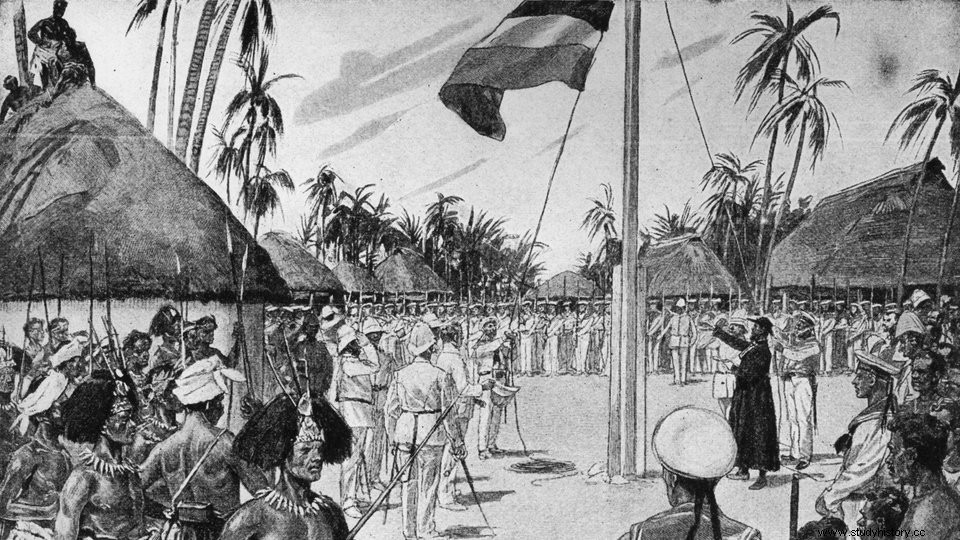
The imperial flag is raised in a Samoan village
Initially, Bismarck simply let the colonial pioneers have their way. He promised them German rear cover in case they were in danger. However, he shied away from spending on comprehensive colonial administration. He even tried to avoid the term "colonies" and instead preferred to speak of "protected areas".
But this strategy soon proved unrealistic. If you wanted to build plantations or even - as in German South West - railway lines on a large scale, you had to keep the Germans happy with the insignia of German culture and protect them from the resentment of the locals in an emergency.
Police forces and civil servants were soon dispatched to the colonies, and schools, churches and cultural institutions were founded. In addition, mostly Christian missionaries were on duty, who wanted to lead the natives to "civilization" with a sometimes considerable sense of mission. However, in many places they protected their wards from the violent actions of the colonial administration.
The colonies in detail
In general, each colony had its own history. Togo and Cameroon as well as the Pacific possessions of German New Guinea and German Samoa were primarily set up as trading and plantation colonies:coffee, cocoa, coconuts, copra and palm products were bought from the local residents and the goods were shipped to Europe.
In German Southwest and German East Africa, on the other hand, it was hoped to attract settlers from the mother country - albeit with only moderate success. While up to 200,000 people have emigrated from Germany every year since the founding of the Reich in 1871, mainly to America, between 1884 and 1914 only 40,000 of them were drawn to the German protectorates.
In China, on the other hand, it was more about symbolic politics:there, the Kiautschou Bay, leased for 99 years in 1898, was to be expanded into a German "model colony" based on the model of Hong Kong, which was under British administration. In fact, by 1914, Kiautschou's capital, Tsingtao, a former fishing village, had a new port, drinking water facilities, a university, and even a German brewery.
Economically, however, almost all of the colonies turned into a loss-making business. Only in the case of Togo was the German Reich able to achieve a small surplus.
There were also numerous colonial scandals, which caused bad press in the mother country, and uprisings by the locals. German colonialism showed its ugliest face especially in 1904 during the genocide of the Herero.
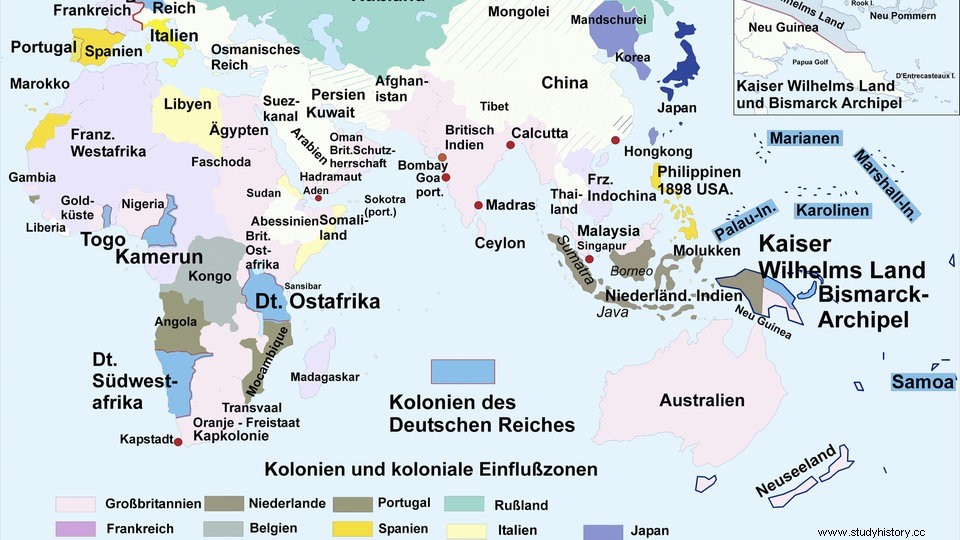
The German Colonies
Herero and Nama genocide
Before the uprising, about 80,000 Herero lived in the area of German Southwest. They saw themselves increasingly under pressure from the German settlers:the grazing area for their cattle was decimated; unfair trade practices drove many into poverty.
In January 1904, the first warriors under Samuel Maharero attacked German farms, trading posts and the railway line. Governor Theodor Leutwein relied on a negotiated solution, but was unable to end the uprising quickly. So the Kaiser appointed Lieutenant General Lothar von Trotha as commander of the Schutztruppe.
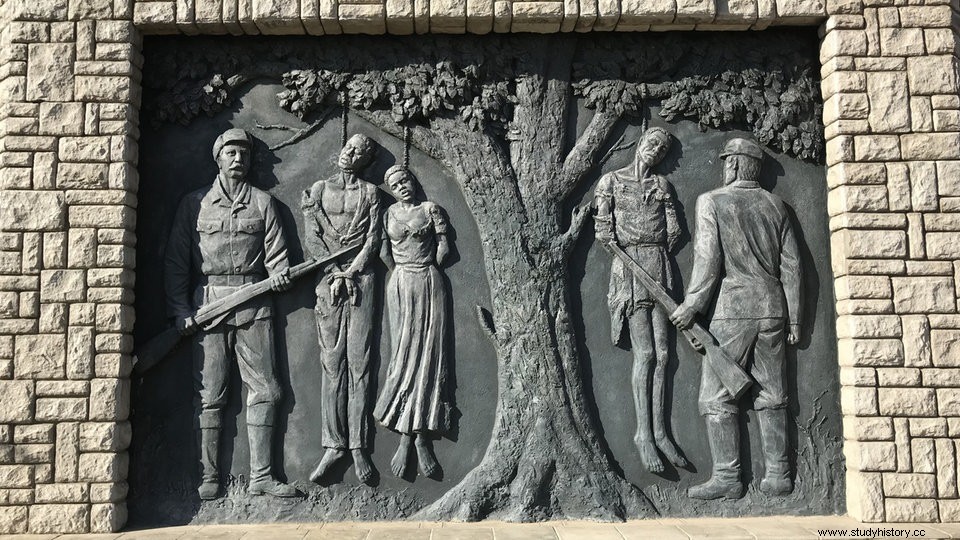
In Namibia today a memorial commemorates the genocide
In the Battle of Waterberg, von Trotha wanted to defeat the Herero in August 1904, but was only able to drive them into the Omaheke desert. There he systematically cut off their access to water points. Tens of thousands of Herero died of thirst.
Today historians regard this procedure as genocide. Von Trotha's aim was not to expel the Herero, but to destroy them. It is estimated that only a quarter of the Herero survived the atrocities. An uprising by the Nama people was also brutally suppressed. In total, the German colonial troops are said to have murdered up to 75,000 Herero and Nama in 1904.
Germany now recognizes the war of annihilation against the Herero and Nama as genocide. So far, however, the federal government does not want to pay reparations, as demanded by Herero representatives.
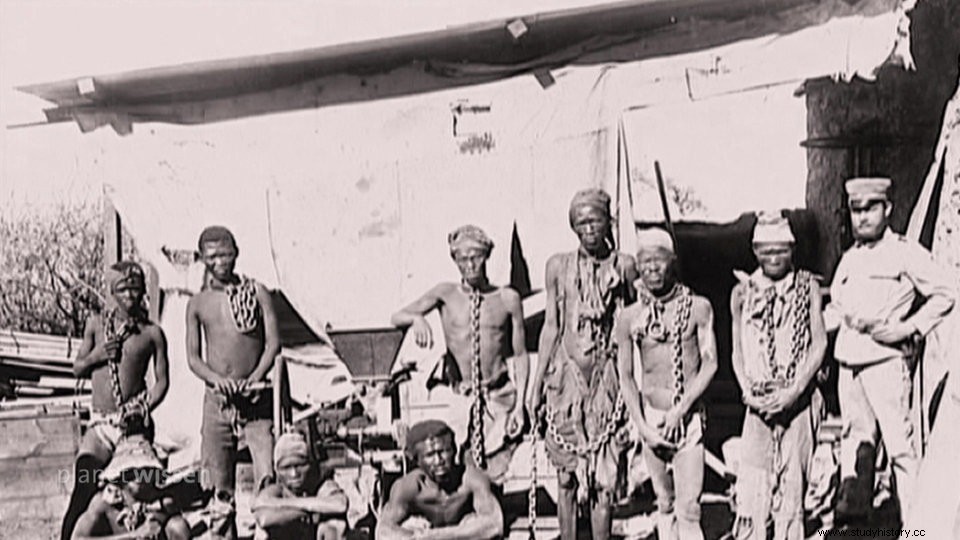 Start video, cancel with escape
Start video, cancel with escape The Herero and Nama Genocide
planet knowledge. 06/23/2022. 00:54 min. Available until 06/23/2027. WDR.
Dream and Trauma
The First World War finally put an end to German colonial dreams. At the end of 1914, just a few months after the outbreak of war, Togo, German New Guinea, Samoa and Kiautschou fell to the Allies.
Only in East Africa did the German Schutztruppe under their commander Paul von Lettow-Vorbeck remain undefeated until 1918 - a circumstance that established Lettow-Vorbeck's almost mythical reputation during the Weimar Republic.
Except in the former German South West Africa, the former settlers were often interned for years after the end of the war and finally had to return to a Germany that had not waited for them and only felt reminded by them of the shame of their own defeat.
They only got a boost when the Nazis seized power:in addition to opening up new "living space" in the East, Adolf Hitler also planned to colonize Africa again. With the unconditional surrender of the German Reich in 1945, this megalomaniac dream was finally over.
